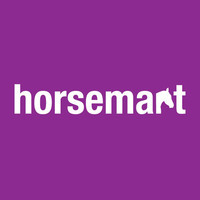
Are You & Your Horse Ready For Bitting Advice? The Steps You Need To Consider First
Equestrian Advice & Guides All Disciplines
Build your business profile for FREE and expose your services to thousands of potential clients!
Create my profile now!
The Holstein is a German warmblood breed believed to date as far back as the thirteenth century so the oldest of the German warmblood breeds. It originated from the area called Schleswig-Holstein in Germany from which it takes its name. Originally influenced by both Spanish and Neapolitan blood, the Holstein has always been a popular export to other European countries. However the biggest breeding impact on the Holstein was the introduction of both the Thoroughbred and the Yorkshire Coach Horse, the latter to develop the Holstein as a desirable carriage horse in the seventeenth and eighteenth centuries. The Thoroughbred added refinement particularly to the head and the Yorkshire Coach Horse added a more distinctive action to the Holstein gaits so a wider action plus, a genuine and kind temperament.
As with so many of these breeds after the Second World War, there was no longer a military or carriage requirement for them and so the Board of Directors of the breeders’ federation purchased 30 Holstein stallions and three Thoroughbreds and set about re-directing and re-shaping the breed. The Thoroughbred was used again to refine the breed and remove traits that had been considered desirable in a carriage horse such as a higher knee action. More unusually down the years the Holstein has perhaps retained its unique character more than some other warmblood breeds because the Studbook was closed; the Holsteiner mare book does not accept other breeds for registration. But conversely, you will find Holstein pedigrees in the breed lines of many other successful warmblood horses such is their influence and desirability. This uniqueness tempered with careful breeding to remove less desirable traits has resulted in the modern Holstein, a powerful athlete which excels in equestrian sport.
The German Association for Holsteiner horses the Holsteiner Verband, have as their tag line for the breed, “character, charisma, class” and this perfectly encapsulates the Holsteiner. The Association is a collective of about 6,000 Holsteiner breeders in the north of Germany. The Holsteiner Verband also has a breeding base at Elmshorn in north Germany from where they breed and produce top Holsteiners. Interestingly they cater for all levels (although this is probably to some degree relative) also offering more mature horses for less experienced riders as well as top end sports horses likely to forge an international career. Like other German breeding organisations, they have two or three auctions every year to showcase the breed with horses available to purchase.
Although Holsteiners as a breed represent only around 6% of the European warmblood population, their success has been far reaching and of a level quite disproportionate to their breed presence. Holsteins have been particularly successful in show jumping but also excel at dressage. During the 1950s and 1960s, the breed began to take off in the sport of show jumping with such legendary names as Ladykiller who went on to produce the famous stallion Landgraf, and Cor de la Bryere. A statue of Landgraf stands at the centre in Elmshorn. In the 1950s, a horse called Meteor won a bronze medal at the 1952 Olympics in Helsinki, a gold medal at the 1956 Olympics in Stockholm and a further gold medal at the 1960 Olympics in Rome. In 1958 he became the European Champion; thus began the German domination of the sport of showjumping and the huge success and influence of the Holstein horse. Do not overlook dressage though, who could forget the famous horse Granat competed by Christine Stuckelberger, an Olympic Gold medal winner, European Champion and World Champion.
Currently the Holsteiner studbook is ranked number one for show jumping with the World Breeding Federation for Sports Horses. In more modern times, we have seen the Holsteiner stallion Casall competing at the London 2012 Olympics with Rolf Goran-Bengtsson and even the well known dressage stallion Totilas has two Holsteiners in his dam pedigree. It is not unknown for Holsteiners to appear in the three day event as well and some horses with sufficient Thoroughbred in their pedigree have succeeded in this discipline at an international level. Hinrich Romeike won a gold medal in the three day event at the Beijing Olympics in 2008 on a grey Holsteiner Marius.
The brand for the Holstein is a shield with a crown above it. Coat colours are usually dark although there are also plenty of greys. Generally as a breed of horse they are noted for their presence, their impressive “engine” and above all their willingness and generous temperament without which no horse will ultimately succeed in equestrian sport.

